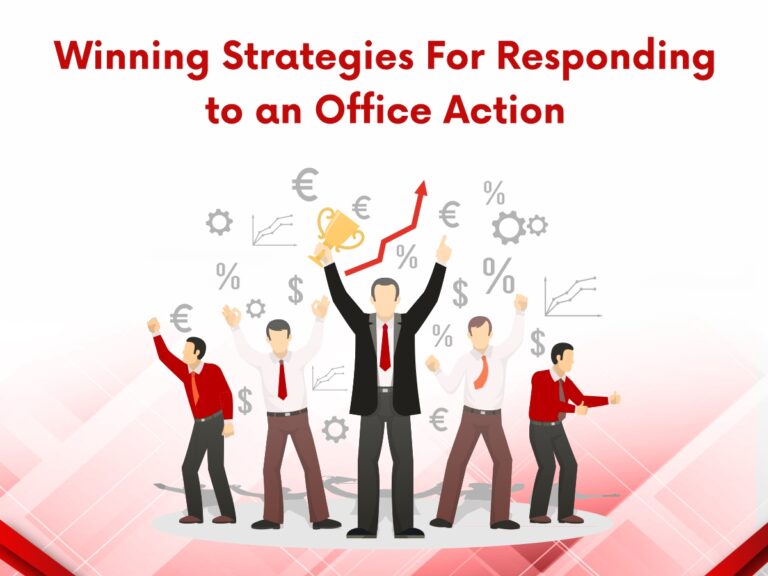
If you’re reading this, you’ve most likely just received a correspondence from the Patent and Trademark Office informing you that your patent application has been issued an ‘office action’. Now you’re trying to figure out what exactly an office action is, what you need to do to respond to it and who is the best person to respond to an office action. Stay here: we’ll cover all these questions and more, including how you can create an effective strategy to overcome the rejections and objections. Let’s start with explaining what an office action is!
An Office Action (OA) is an official document delivered to a patent applicant by a patent examiner following a comprehensive examination of a patent application. It usually comprises objections and rejections to the application’s specification, claims, and drawings. For software patent applications, the rejection may also be in regard to the application being Abstract. To counter these rejections or objections, the applicant must create and file a response within the time limit, including all relevant reasons and modifications.
It is critical to develop an effective plan before drafting an Office Action response to guarantee that the response is accepted and the application is granted. Everything connected to the preparation of such a plan is covered in the following article.
A patent applicant must perform the following steps while drafting response:

Strategy development is an important aspect of drafting an OA response as mentioned above in steps. The usual approach for developing a strategy is as follows:
Some of the repercussions of using standard approach are as follows:
From the consequences mentioned above, it is clear that there is a need of preparing a correct strategy before drafting an Office action response.
By following the steps outlined above, you can develop a solid approach that will help you increase your chances of acquiring a patent.
A person responding to an office action should be familiar with techno legal language because they will be modifying a portion of the disputed claim elements or arguing against the patent examiner’s objections. The response must be rational and analytical in nature, to interpret and dismiss the objection expressed in the office action widely.
The best person to respond to an office action is the patent drafter or the patent consultant who has a thorough knowledge of the invention and the patent law. The Wissen research office action service is meant to assist clients in overturning patent examiner rejections or objections. Our firm has a lot of expertise dealing with rejections and objections.
Wissen Research has successfully responded to more than 100 office actions in USPTO.
Author
Anamika Manhas

IPR in the Music Industry: Safeguarding Innovation in the Digital Music Era

Innovation in Automobile Industry: Key Tech & IP Trends to Watch

Protecting Innovation in Fashion: Key IP Strategies Every Fashion Brand Should Implement

From Lab to Table: How Cultivated Meat is Revolutionizing the Industry?
© Copyright 2024 – Wissen Research All Rights Reserved.